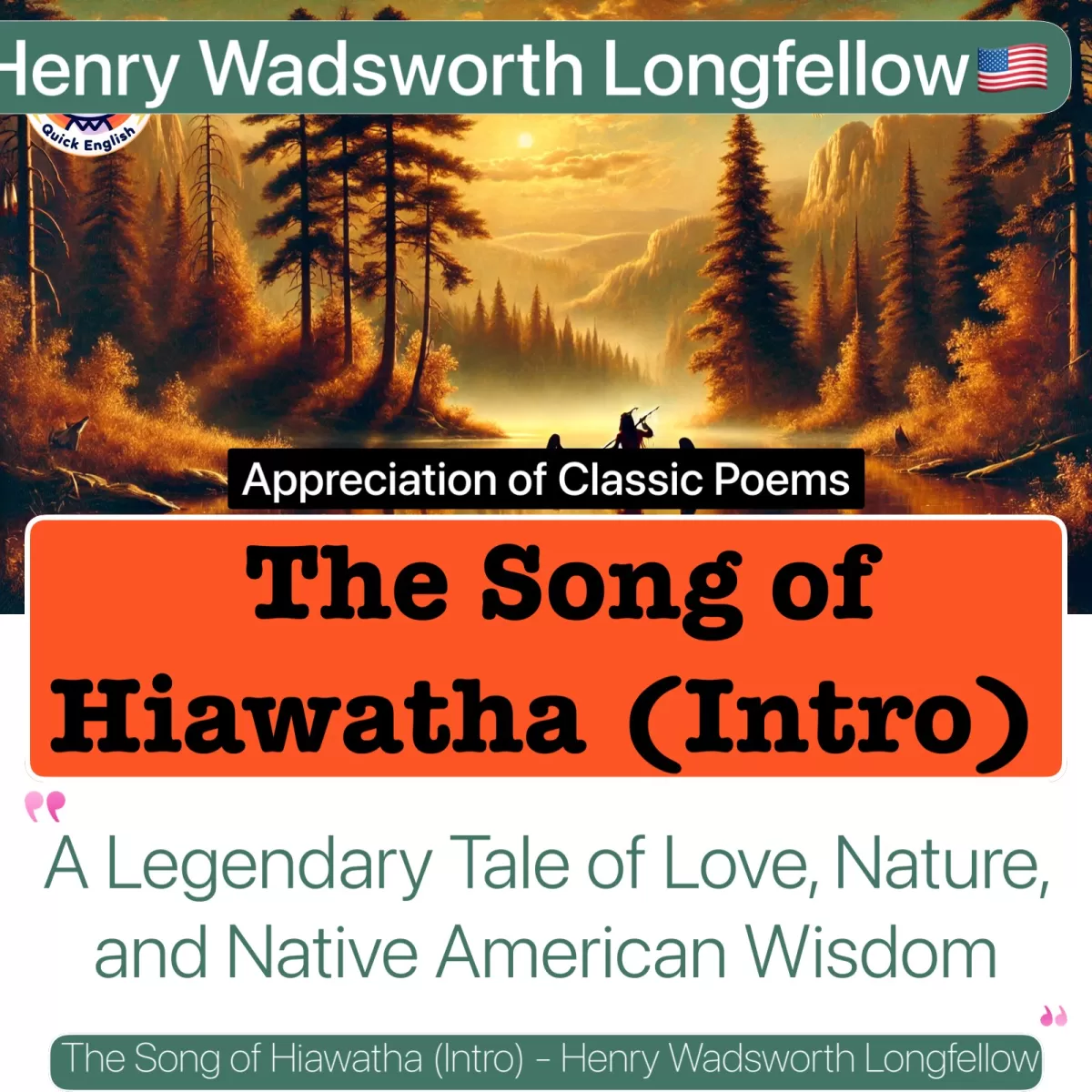The Song of Hiawatha (Intro) - Henry Wadsworth Longfellow

A Legendary Tale of Love, Nature, and Native American Wisdom
Introduction to "The Song of Hiawatha"
"The Song of Hiawatha" by Henry Wadsworth Longfellow is an epic poem that draws heavily on Native American legends and traditions, particularly those of the Ojibwe (also spelled Ojibway) and other indigenous peoples. This introduction sets the stage for the narrative by explaining the origins of the stories and songs within the poem.
Origins of Stories and Legends
The poem begins with a series of rhetorical questions asking about the origins of the stories, legends, and traditions that will be told:
- "Should you ask me, whence these stories?"
- "Whence these legends and traditions,"
These questions evoke imagery deeply connected to nature—forests, meadows, rivers, and mountains. The poet suggests that these tales are imbued with natural elements: the scents of the forest, the dampness of meadows, the smoke from native dwellings (wigwams), and the sounds of rushing rivers and echoing thunder in the mountains.
Geographical and Cultural Roots
Longfellow then provides answers to these questions, stating that these stories come from various landscapes and regions associated with Native American tribes:
- "From the forests and the prairies,"
- "From the great lakes of the Northland,"
- "From the land of the Ojibways,"
- "From the land of the Dacotahs,"
These geographical references highlight the rich tapestry of Native American culture spread across different terrains—from forests and prairies to lakes and mountains.
The Role of Nawadaha
A key figure introduced in this section is Nawadaha, described as a musician and sweet singer. He is the source from whom the poet claims to have heard these legends:
- "I repeat them as I heard them / From the lips of Nawadaha,"
This establishes Nawadaha not just as a storyteller but as a cultural custodian who preserves and passes down oral traditions.
Nature's Influence on Nawadaha’s Songs
When asked where Nawadaha found these songs, the response ties them even more closely to nature:
- "In the bird's-nests of the forest,"
- "In the lodges of the beaver,"
- "In the hoof-prints of the bison,"
- "In the eyry of the eagle!"
Nature itself is personified as the teacher and muse of Nawadaha. Various birds like the plover, loon, wild-goose, heron, and grouse are said to have sung these songs to him, emphasizing the deep connection between Native American culture and the natural world.
Description of Nawadaha's Dwelling
Finally, when questioned about who Nawadaha was, the poet describes his dwelling place in detail:
- "In the vale of Tawasentha,"
- "In the green and silent valley,"
The setting is picturesque, filled with meadows, cornfields, and singing pine trees that change with the seasons. The water-courses nearby are marked by seasonal changes—rushing waters in spring, alders in summer, white fog in autumn, and black lines in winter. This vivid imagery paints a serene and harmonious environment that mirrors the rhythm and flow of the stories themselves.
Conclusion
In summary, this introductory section of "The Song of Hiawatha" serves multiple purposes:
- It situates the reader within the natural and cultural landscape of Native American life.
- It introduces key themes of nature, tradition, and oral storytelling.
- It establishes Nawadaha as a vital link between the past and present, ensuring the continuity of these ancient tales.
Through rich descriptive language and evocative imagery, Longfellow crafts an immersive beginning that invites readers into the world of Hiawatha—a world steeped in the beauty and wisdom of Native American heritage.
Key points
This introductory excerpt from 'The Song of Hiawatha' immerses readers in a world where nature, spirituality, and humanity intertwine, offering timeless lessons on courage, harmony with the environment, and the power of oral storytelling. Longfellow's lyrical verses celebrate Native American traditions while highlighting universal themes like love, loss, and resilience, making it both culturally significant and emotionally resonant for modern audiences.







